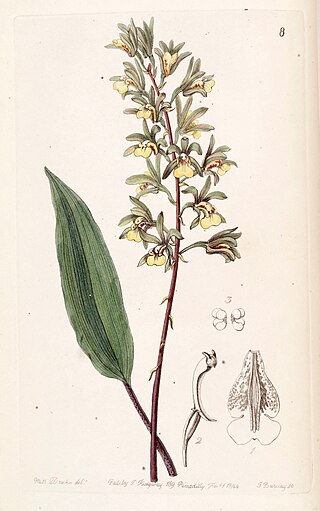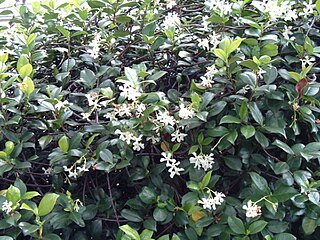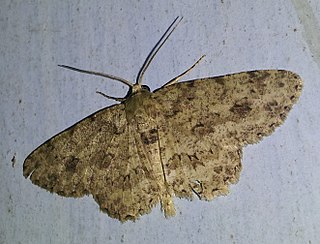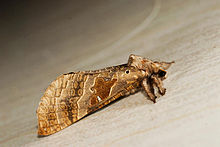
Mallotus is a genus of the spurge family Euphorbiaceae first described as a genus in 1790. Two species are found in tropical Africa and Madagascar. All the other species are found in East Asia, the Indian Subcontinent, Southeast Asia, eastern Australia, and certain islands of the western Pacific. The genus has about 150 species of dioecious trees or shrubs.

Tainia, commonly known as ribbon orchids or 带唇兰属 is a genus of about thirty species of evergreen, terrestrial orchids in the distributed from India, China, Japan, Southeast Asia to New Guinea, the Solomon Islands and Queensland.

Trachelospermumstar jasmine, Confederate jasmine, is a genus of evergreen woody vines in the dogbane family Apocynaceae, first described as a genus in 1851. All species are native to southern and eastern Asia.

Pholidota, commonly known as rattlesnake orchids, is a genus of flowering plants from the orchid family, Orchidaceae. Plants in this genus are clump-forming epiphytes or lithophytes with pseudobulbs, each with a single large leaf and a large number of small, whitish flowers arranged in two ranks along a thin, wiry flowering stem that emerges from the top of the pseudobulb. There are about thirty five species native to areas from tropical and subtropical Asia to the southwestern Pacific.

Orgyia postica, the cocoa tussock moth or hevea tussock moth, is a species of moth of the subfamily Lymantriinae of the family Erebidae found in the Oriental tropics of India, Sri Lanka, Myanmar, Borneo, Java, New Guinea, and Taiwan. It was described by Francis Walker in 1855.
Endoclita auratus is a species of moth of the family Hepialidae. It is known from Myanmar. The food plants for this species are Alnus, Cryptomeria, and Eucalyptus.
Endoclita chalybeatus is a species of moth of the family Hepialidae. It is known from India. Food plants for this species include Gmelina, Tectona, and Theobroma.

Endoclita damor is a species of moth of the family Hepialidae. It is known from India and the Himalayas. Food plants for this species include Albizia, Altingia, Cinchona, Coffea, Erythrina, Eugenia, Glochidion, Manglietia, Nyssa, Schima, Tectona, Tetradium, and Theobroma.
Endoclita gmelina is a species of moth of the family Hepialidae. It is known from Myanmar. Food plants for this species include Gmelina and Tectona.
Endoclita hoesi is a species of moth of the family Hepialidae. It is known from Borneo. Food plants for this species include Elettaria, Eucalyptus, and Theobroma.

Endoclita malabaricus is a species of moth of the family Hepialidae. It is known from India.
Endoclita purpurescens is a species of moth of the family Hepialidae. It was described by Frederic Moore in 1883 and is known from Sri Lanka. Food plants for this species include Camellia and Cinchona.
Endoclita sericeus is a species of moth of the family Hepialidae first described by Charles Swinhoe in 1901. It is known from Java, Indonesia. Food plants for this species include Albizia, Camellia, Cinchona, Crotalaria, Manihot, Tectona, and Theobroma.
Endoclita undulifer is a species of moth of the family Hepialidae. It is known from India. Food plants for this species include Alnus, Byttneria, Callicarpa, Cryptomeria, Eucalyptus, and Gmelina.

Indarbela quadrinotata, the bark-eating caterpillar, is a moth in the family Cossidae. It is found in India and Sri Lanka. It was described by Francis Walker in 1856.

Suana concolor is a moth of the family Lasiocampidae first described by Francis Walker in 1855. It is found in India and Sri Lanka, to South China, Java, Borneo and the Philippines.

Ectropis bhurmitra, the tea twig caterpillar, is a moth of the family Geometridae. The species was first described by Francis Walker in 1860. A widespread Asian species, it is found around Indo-Australian tropics from India, Sri Lanka and Hong Kong, Taiwan, Thailand, New Guinea to Australian Queensland and the Solomon Islands.

Xylosandrus crassiusculus, known generally as the Asian ambrosia beetle or granulate ambrosia beetle, is a species of tropical bark beetle in the family Curculionidae. It is native to Asia and has spread to Africa, Europe, Australasia and the Americas. The adult beetle is reddish-brown and some 2 to 3 mm long.











